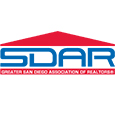How to use Measurements and Statistics to Create a Winning Call Center Operation
If you believe call centers are statistics driven, then you are right on the money. Today’s fantastic CRM (Customer Relationship Management) packages allow management to enjoy a complete grasp on performance in the call center. In turn, these platforms benchmark past, present and future opportunities. Minimum requirement standards become established, and ongoing analysis conducted. It is no longer a case of wondering how divisions and people are performing. Today’s stats, blended with people, can form a winning combination in the call center.
There is a challenge, however. So often, call center agents, who represent that critical link between organization and customer, believe they are being measured by statistics. They worry constantly if management is going to tap them on the shoulder and discuss call length or after-call time. They feel the job is purely a statistical win and loss. Yet, equally often, they don’t know which categories, exactly, are being measured. And, they can’t recall, exactly, the last time they were presented with their statistics. And, they can’t tell, exactly, with any confidence, what their statistical objectives are.
If this sounds familiar, clearly, your organization is not alone. In fact, across the board, call center management realizes that statistics and measurements will demonstrate clear patterns of who is doing well and what is and is not working in the call center. Yet, there are so many statistics, so many numbers, that agents simply are confused. And management does a poor job to help agents find common ground.
So, what is the solution? What numbers are the right numbers to monitor for your situation? How can statistics become a necessary positive, not a necessary evil, for call center agents? And, how can management deliver benchmarking to agents in a simple and concise platform? Here are some tips:
1. Make your agents aware of their numbers and the division goals.
No kidding, I would venture to say more than 50% of agents in any organization could not tell you their statistical goals. Nor do they regularly see their numbers. From day one and new hire training, it is critical that management share with agents every possible statistical objective available for interpretation, and, the top goals that call center management requires. I know, I know. You probably did this in new hire training. So, do it again. And, every quarter, make sure it is done. Agents will only remember what is reinforced. Most of the time, agents have no idea of what is required. Repetition works.
2. Present statistics and results to agents all of the time.
Statistics mean very little unless they are utilized to drive renewed performance in the call center. Unlike other departments in a company, which may not require hands on assessments every week or month, call center agents will get better at producing results if they are coached throughout the process. Therefore, it is incumbent upon call center supervisors to present statistics to agents every week or month and benchmark agent results against their peers and past history.
The key is in displaying the statistics. Through one-on-one meetings at the beginning of each month or follow-up assessments at the mid-point, agents can visually understand their results in order to be accountable for their performance. That means supervisors should post statistics on a board at the midpoint of the call center or email statistics via a spreadsheet to agents on a regular basis. Place agent statistics on their chair every morning! It does not matter how supervisors convey statistics. The info just needs to be presented.
3. Focus on two key objectives for inbound divisions.
The inbound call center can rely on dozens of pure statistical measurements in order to create call center performance. Depending on what types of calls are being received, such as sales or customer care, measurements will differ. With that said, two key objectives are universal across all inbound divisions.
Number of calls answered
The primary goal for departments and agents are to answer calls. This, however, should be balanced with burning through calls and handling them poorly simply in order to answer more calls. So, management must benchmark expectations. If the “calls answered” number should be eight an hour, than agents with four or fourteen answered in the hour need ongoing coaching. By identifying the “calls answered” objective, the entire division can also begin doing a better job staffing and planning for future events.
After-call wrap-up time
This category slips past some call center management. It is one of those few numbers that can directly be related to high abandoned rate, long wait times, and low numbers of calls answered. The time after a call is completed but before the agent becomes available to take another call is critical. If an agent is not trained properly, and if they are slow in the order-entry side, this time goes up. If agents are proficient with the job and recognize what their goals are, this key measurement goes down. And, if agents are taking long break periods or talking with friends, then certainly, this number will be high. After-call wrap-up time is one statistic where human behavior plays a large role. This statistic can be measured and managed to improve the performance of the entire organization.
4. Focus on two key objectives for outbound divisions.
The outbound division is an entirely different breed than inbound. Very few statistical measurements blend between both, although after-call wrap-up time is one that does swing between inbound and outbound. Measurements for outbound divisions matter by project, i.e. a sales or survey program versus a follow-up call program. It also matters whether technology is being utilized, such as a predictive dialer, and whether the outbound campaign is Business to Consumer or Business to Business. Business to Consumer calls involve less talk time and more dials per hour than Business to Business calls. With that said, management should consider these two key objectives because they are universal across all outbound divisions.
Number of dials
Outbound is very simple to measure. If call center agents stay on the telephone and dial, they will meet their goals and become successful. Literally, that is the secret ingredient to outbound performance. Stay on the telephone and dial. Because it is the overriding factor in execution, the number of dials per agent and as a division tends to be the number one statistic to measure. All of the time, I am asked “How does outbound telemarketing work well for companies?” The answer is simple: Dial the telephone enough times per hour and the science dictates that success will follow.
Talk time
Call Center agents who know when to talk and when to move forward to the next call will become very successful. Unlike inbound calls, where the caller is leading the way by initiating the conversation with the organization, outbound calling is initiated by the organization and therefore is led by the organization. Sensing when to ask questions, when to hang up the telephone and when to call back at a better hour is critical to outbound dialing. Therefore, talk time is critical. Once call center management benchmarks an acceptable goal, and presents that goal to call center agents regularly, then the agents will become capable of doing a better job managing their own talk time.
Conclusion
Statistics and measurements are critical because they help the call center management team coach agents to become better at their jobs. In turn, they shed light on which minimum requirements need to be met in order to hit objectives. When agents know their numbers, understand their goals and realize what is expected of them, short and long term objectives become easy to manage and measure. Results improve. Culture improves. Training becomes successful.
Management must constantly evaluate their statistics and measurements. They should explain these goals to agents. They should display results via one-on-one and group settings. It’s the only way statistics and measurements will drive call center performance.
































